Speculative City

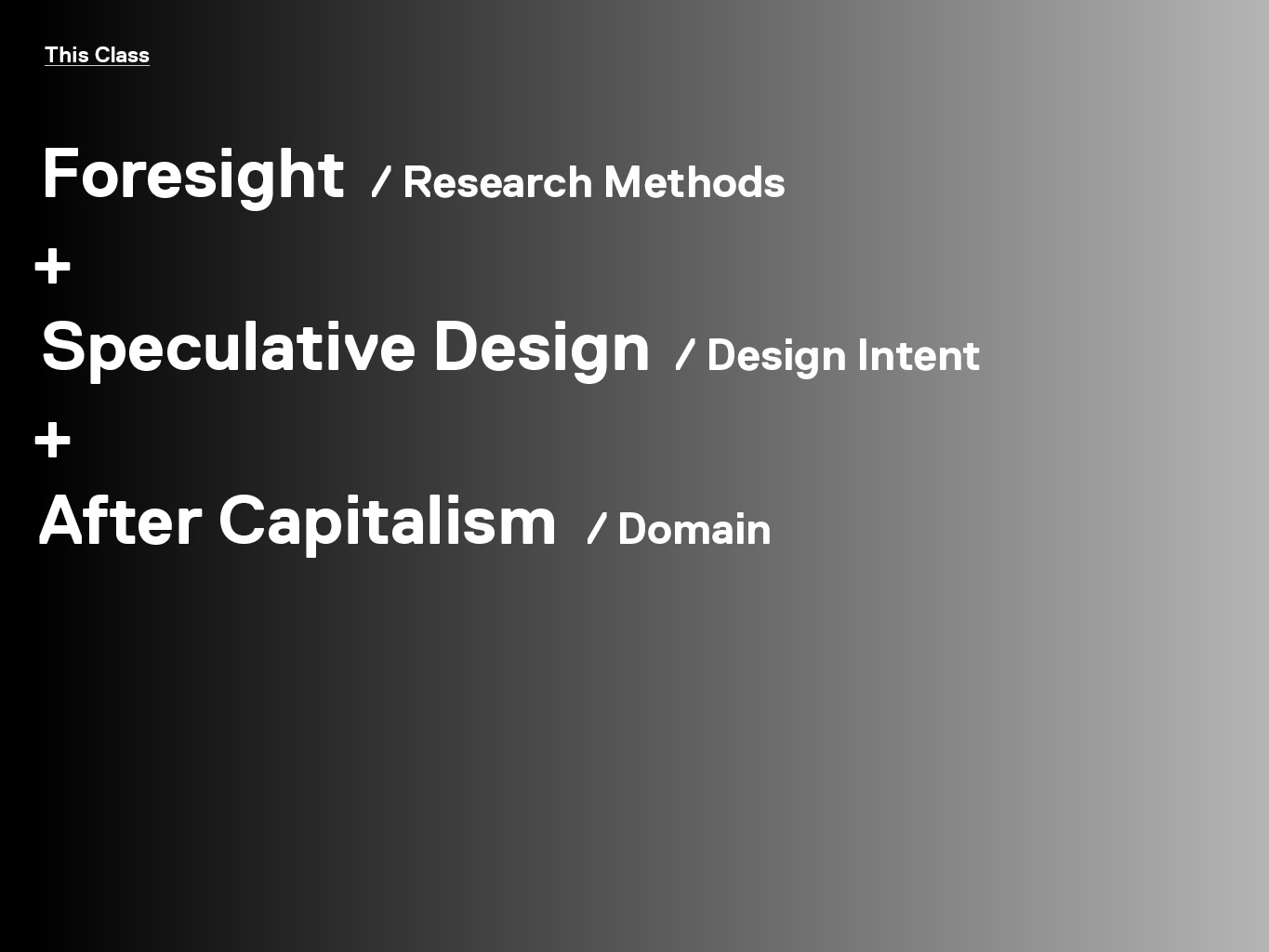
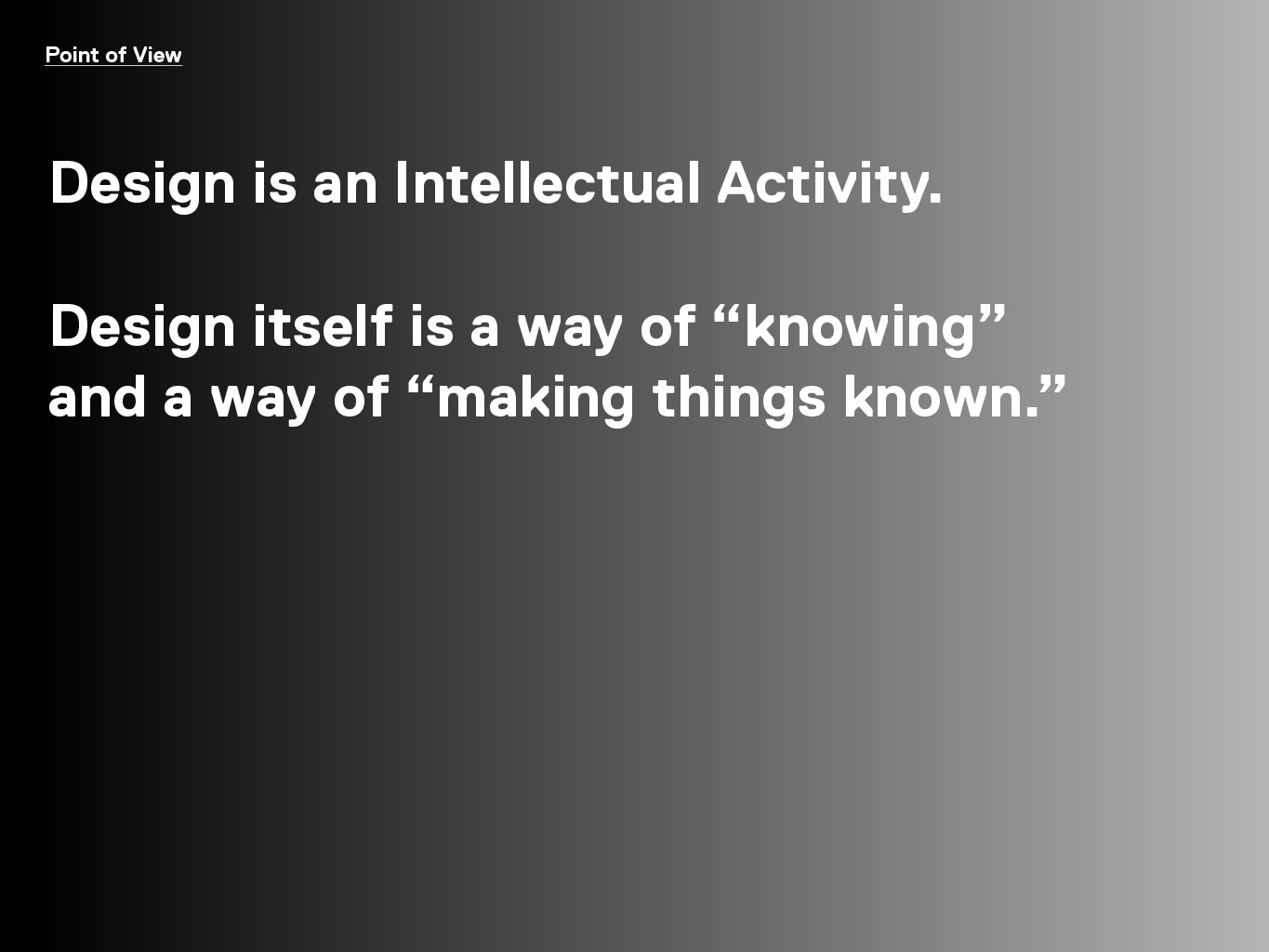

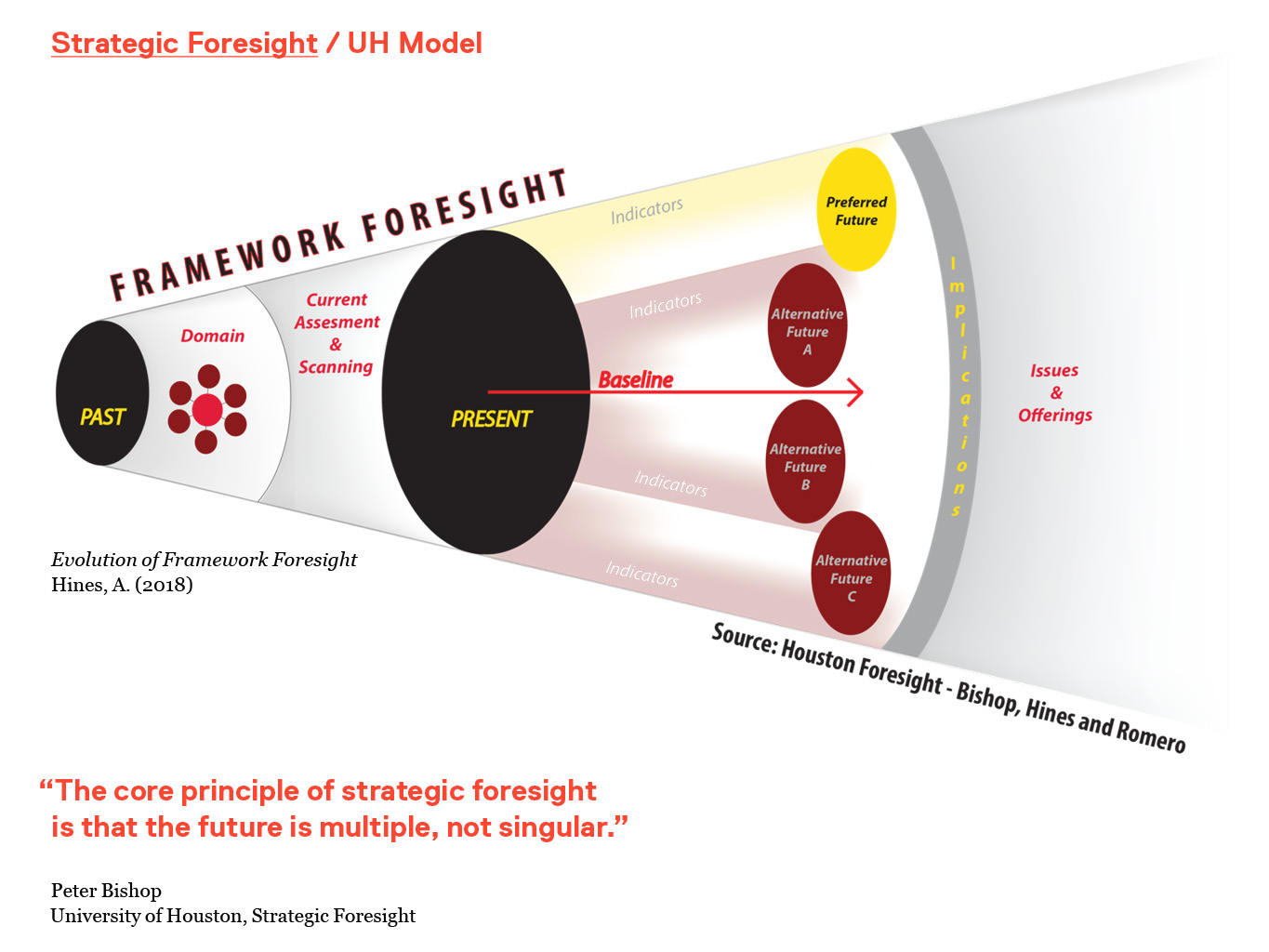



CURRICULUM DEVELOPMENT / 2015–present
Undergraduate course for BDes students: Communication Design, Fashion Design, and Industrial Design
Speculative City is a seminar-studio hybrid collaborative
studio that I developed for BDes (undergraduate) students in Communication, Industrial, and Fashion
Design. The course combines Foresight as a methodology for researching and describing
systemic and transformational change via future scenarios plus Speculative
Design as a means for turning future scenarios into physical and
experiential proposals through prototypes. Since implemented in 2015, the course has adopted various themes of focus, including: social impacts of AI and Design’s potential roles in a Postcapitalist society (or “Design After Capitalism”). View the 2020 class projects ︎
The curriculum is oriented toward critical speculations on Urban Futures and uses Speculative Design as a vehicle for implementing pedagogical strategies to address two overarching challenges:
![]()
![]()
![]()
![]()
![]()
DENUCLEARIZED FAMILY / 2018
Adriana Noritz (Industrial Design) and Luke Weaver (Industrial Design)
This is the story of a family and their relationship with AI in their home. There is a father, a son, a daughter, and an automated home assistant. While the AI system retains the cold, calculate nature of an algorithmic tool, it is designed to include a system of physical interfaces for human-controlled adaptability. It plays the role of partner, imaginary friend, confidant, caretaker, and mother.
This project imagines a future in which AI has become involved in even the most mundane and intimate affairs of everyday life. The goal is to produce critical reflection on the opportunities and challenges of "domesticated" forms of AI, so audiences today can consider what forms of control, limitations, and functions of "smart" domestic technologies are desirable and which are not.
![]()
![]()
![]()
![]()
![]()
![]()
S.I.A. (SENSORY INTEGRATION AID) / 2015
Joe Frankl (Industrial Design)
Research suggests that as young people spend upwards of 7 hours per day on screen-based devices, they begin to lose some ability to decipher human emotions and nonverbal communications. This effect is especially detrimental for children and young adults in critical stages of developing social development. The impact on future generations of adults is yet to be understood.
S.I.A. (Sensory Interaction Aid) is a multi sensory aid designed for a generation that has become unable to interpret the emotions of others. A pair of glasses serves as a platform to support various modules that gather digital sensory data, and translate their meaning to the user through sensory interpretations. For example, a camera-mounted module collects visual data on micro-fluctuations of the human face to interpret fear, anxiety, affection, or other emotions, which are translated into a language of smells.
![]()
![]()
![]()
![]()
Apple Vote / 2018
Hannah Mazur (Communication Design)
As tensions between UX Design, data collection, and privacy increase, new models for corporate decision-making emerge. This scenario proposes Apple, Inc. taking an approach that positions consumers in the role typically played by shareholders. By agreeing to the terms and conditions for use of Apple products, consumers participate in corporate governance. Upon startup, Apple products load the Apple Vote software. By opting in, the app will automatically download the iOS and pro file setup for a "User-Owner." Opting out puts limits on the iOS and how much the user can interact with others on their new device. User-Owners can follow issues and get updates on voting results on the now standard pre-installed Apple Vote app. Responsibility for global activities—from data privacy to supply management to labor relations and pricing impacts—are shared between corporation and consumer.
![]()
![]()
![]()
![]()
![]()
![]()
MOMENT(O) / 2020
Tim Kim (Communication Design), Gail Kreimer (Communication Design), Elie Fermann (Fashion Design), and Joe Reluzco (Industrial Design)
In a transformational scenario of the future, automation populates the workforce and basic needs are met by government. Humans have more control over more of their own time than ever before. Free from the looming and stressful grip of standardized time, people are free to decide how they define the passage of time, and time-telling becomes a personal project. Moment(o) is a collection of time objects decoupled from standardized time system that capitalism created. A wearable device offers two possible faces; both of which operate a more subtle idea of time.
Moment(o) Bloom showcases bacteria colonies growing over time to simulate personal growth. This face represents the user's milestones in visual form. Users have the option to wipe their face off and start on a clean slate or to take a picture and keep it as a remembrance of that period of time.
Moment(o) Rhythm is an interface to create connections between multiple people. Time is seen as a rhythm to follow to a defined point in the future, where users will connect with others again. Two or more people define for themselves how long it will be until they connect again, and Moment(o) Rhythm drains pixels like an hourglass to countdown until the next get-together.
Student projects from this course have beenrecognized by professional and academic organizations such as the Primer 2019 Emerging Designer Exhibition (Adriana Noritz, Luke Weaver, & Noah Katrinchak) and at the AIGA 2019 National Design Conference (Design After Capitalism, Matthew Wizinsky & Adriana Noritz). Methods from the course have been disemminated via workshops at AIGA 2016 National Design Conference (Las Vegas, NV), Primer 2018 Conference (San Francisco, CA), and Social Innovation, Social Justice: Rethinking Design Anthropology 2018 conference (Cincinnati, OH).
The curriculum is oriented toward critical speculations on Urban Futures and uses Speculative Design as a vehicle for implementing pedagogical strategies to address two overarching challenges:
-
Design students need methods to engage, think, and operate
at the level of systems—moving beyond
the skills of crafting objects alone.
-
Design students need methods, frameworks, and approaches to
think critically about the impacts of their work: evaluating the risks,
negative impacts, and potential for social harms—particularly
as designers engage new, emerging, and unprecedented technologies.


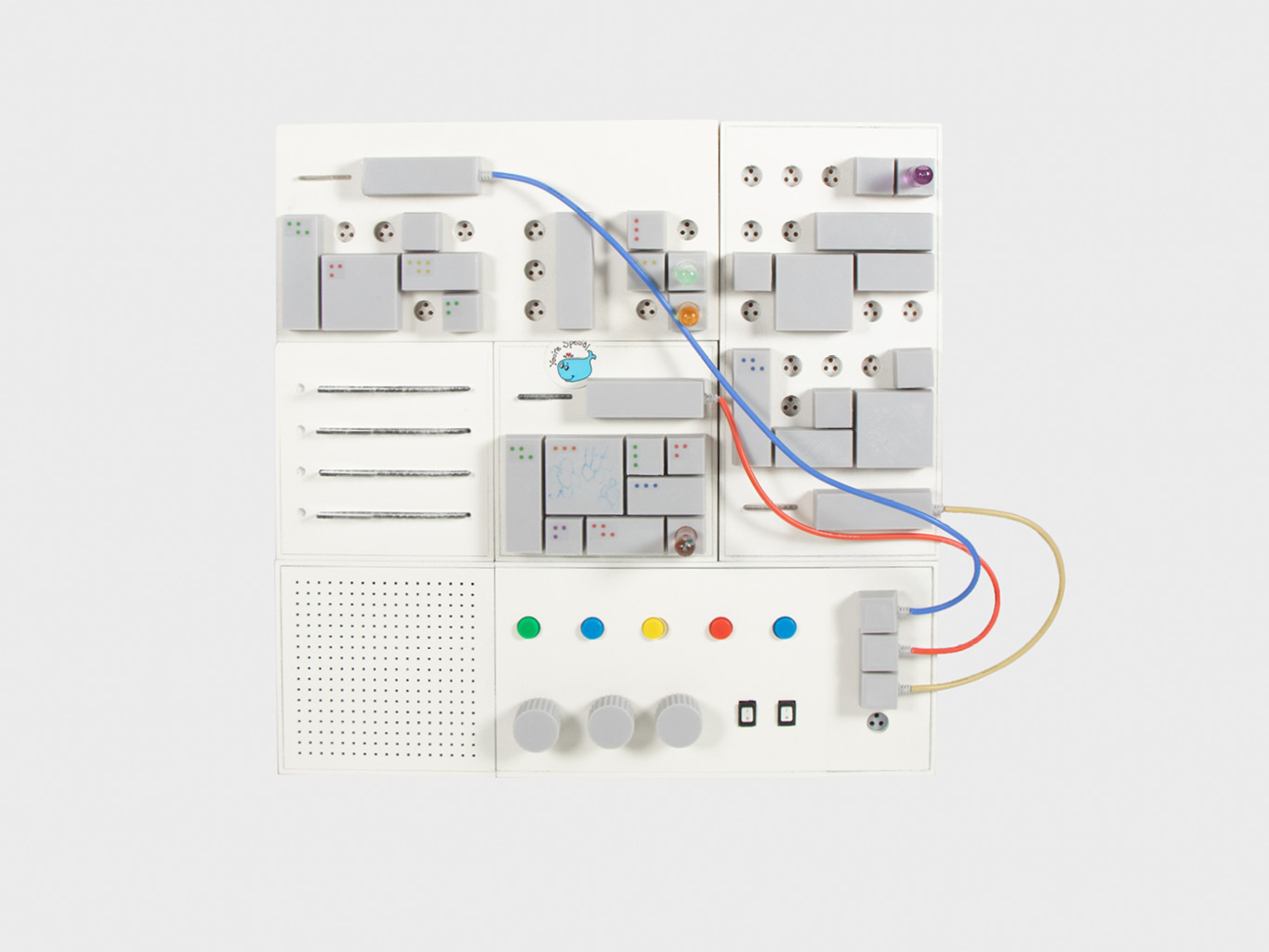
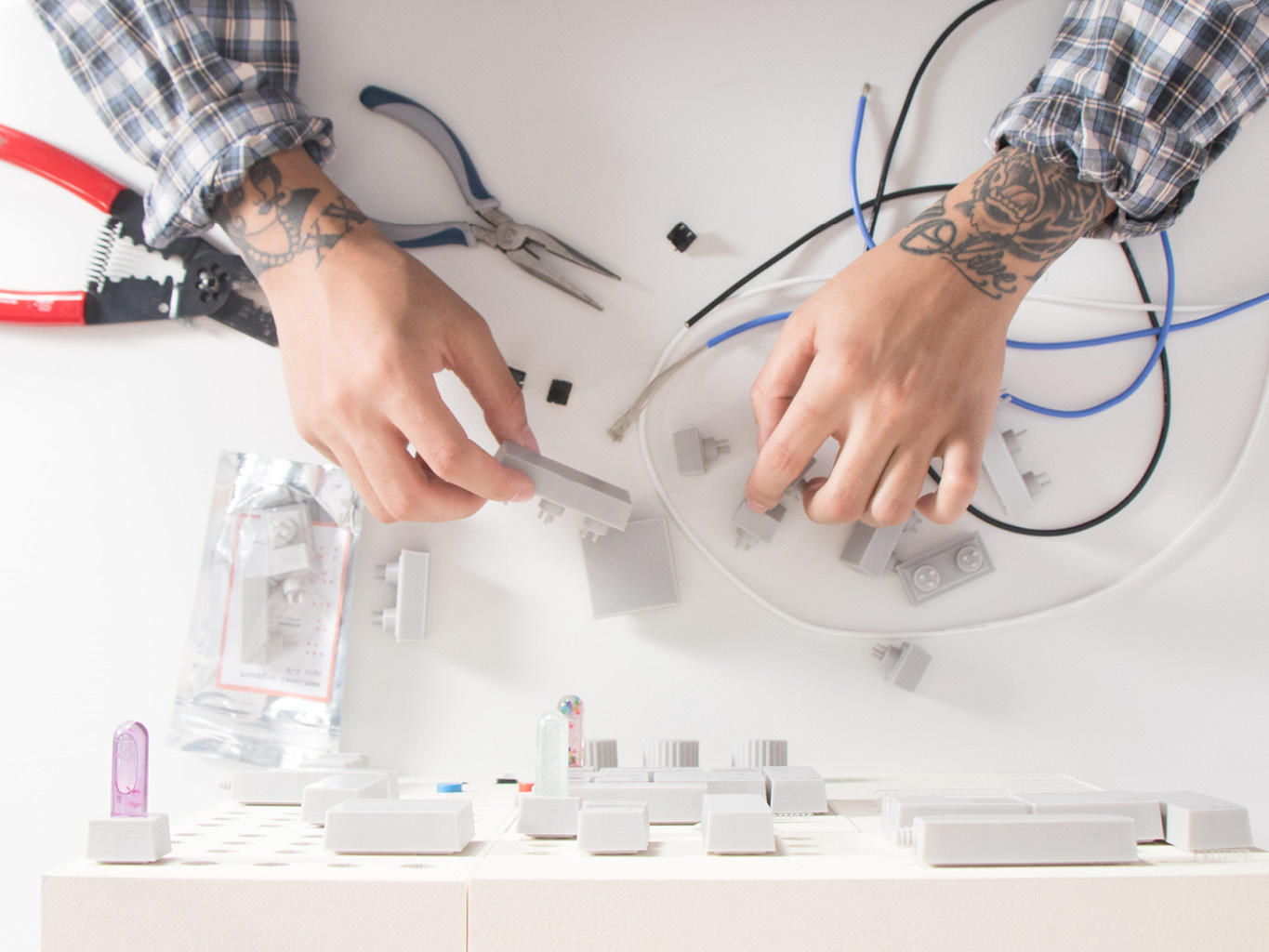
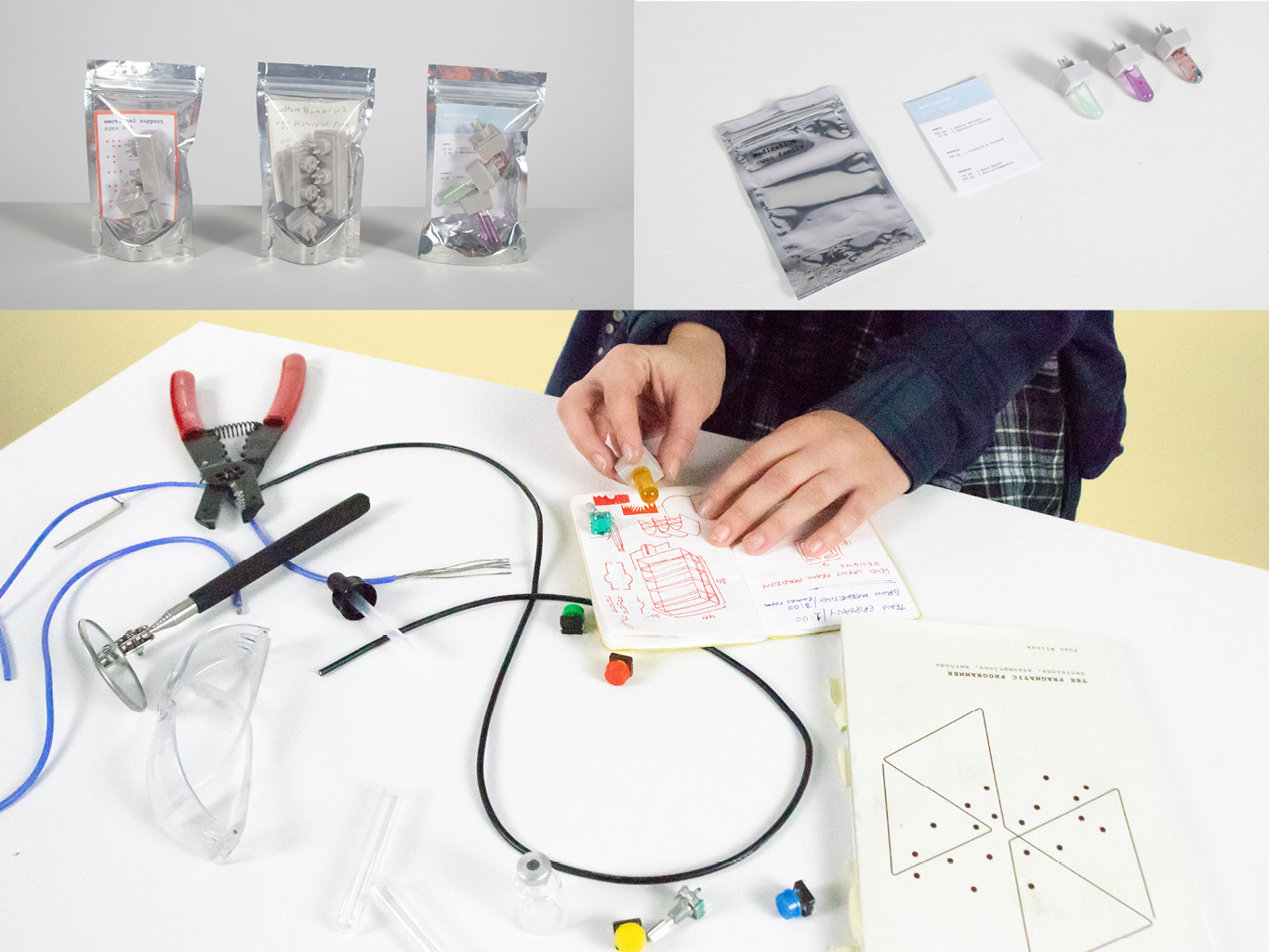
DENUCLEARIZED FAMILY / 2018
Adriana Noritz (Industrial Design) and Luke Weaver (Industrial Design)
This is the story of a family and their relationship with AI in their home. There is a father, a son, a daughter, and an automated home assistant. While the AI system retains the cold, calculate nature of an algorithmic tool, it is designed to include a system of physical interfaces for human-controlled adaptability. It plays the role of partner, imaginary friend, confidant, caretaker, and mother.
This project imagines a future in which AI has become involved in even the most mundane and intimate affairs of everyday life. The goal is to produce critical reflection on the opportunities and challenges of "domesticated" forms of AI, so audiences today can consider what forms of control, limitations, and functions of "smart" domestic technologies are desirable and which are not.
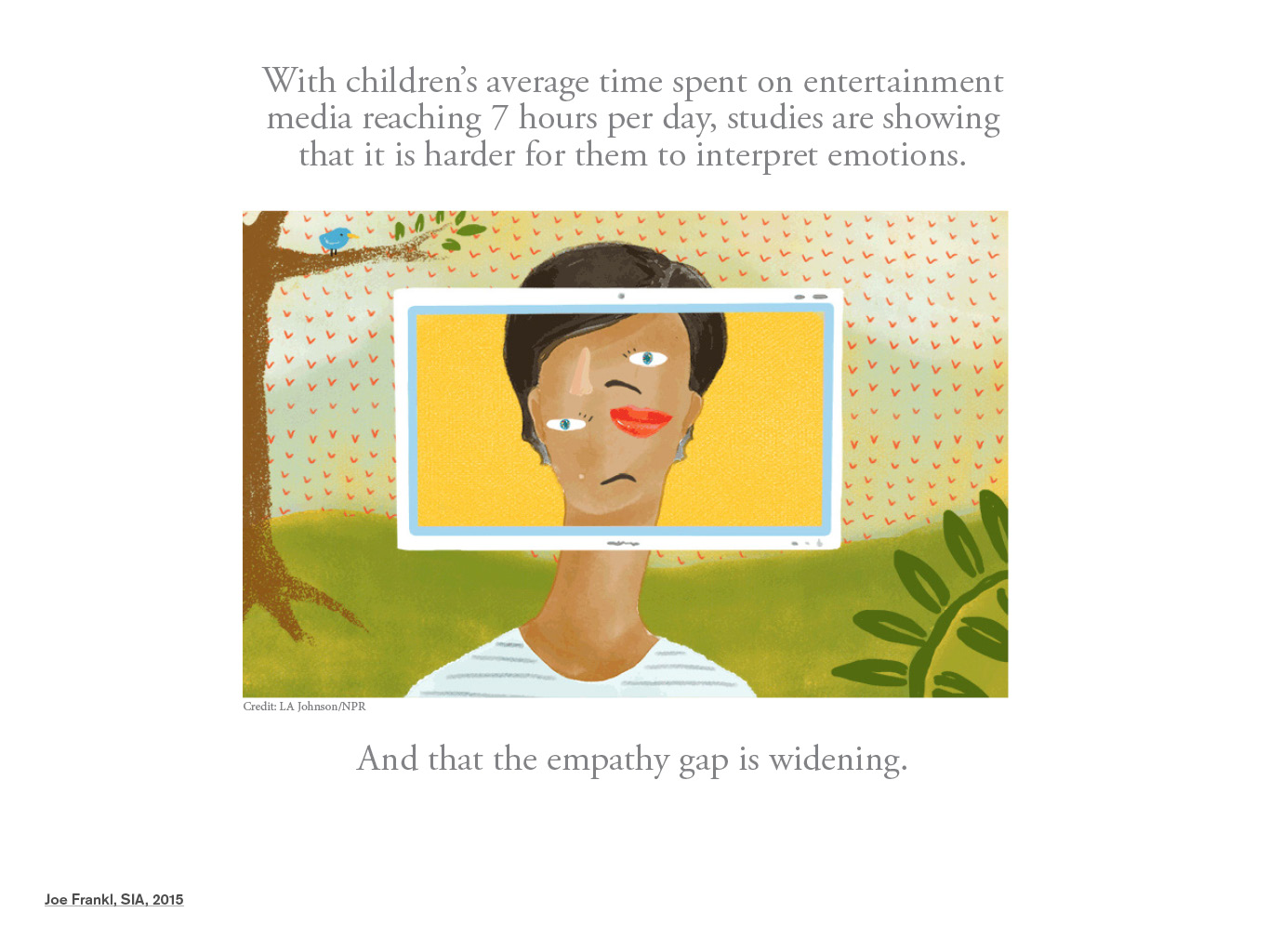
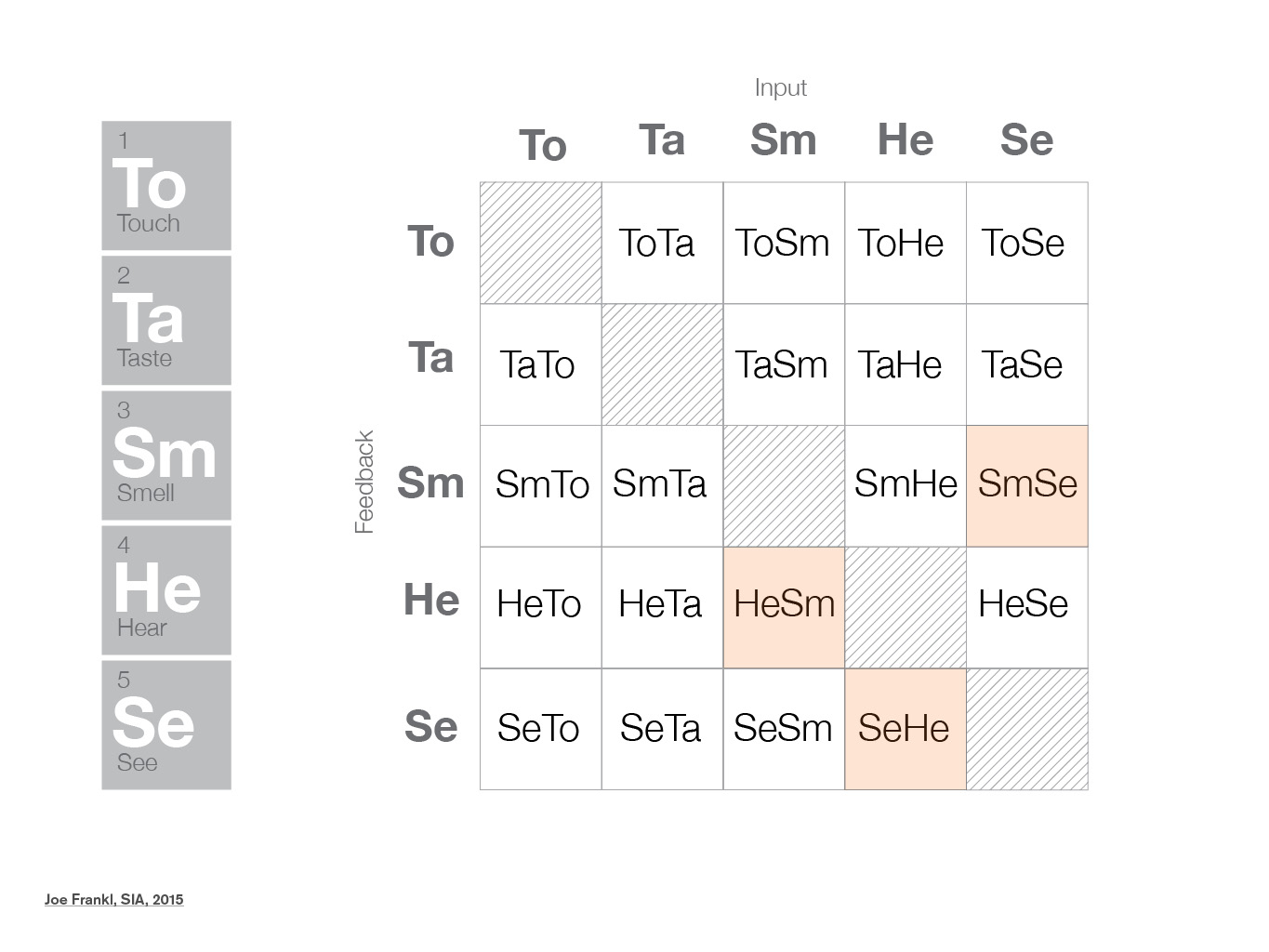




S.I.A. (SENSORY INTEGRATION AID) / 2015
Joe Frankl (Industrial Design)
Research suggests that as young people spend upwards of 7 hours per day on screen-based devices, they begin to lose some ability to decipher human emotions and nonverbal communications. This effect is especially detrimental for children and young adults in critical stages of developing social development. The impact on future generations of adults is yet to be understood.
S.I.A. (Sensory Interaction Aid) is a multi sensory aid designed for a generation that has become unable to interpret the emotions of others. A pair of glasses serves as a platform to support various modules that gather digital sensory data, and translate their meaning to the user through sensory interpretations. For example, a camera-mounted module collects visual data on micro-fluctuations of the human face to interpret fear, anxiety, affection, or other emotions, which are translated into a language of smells.



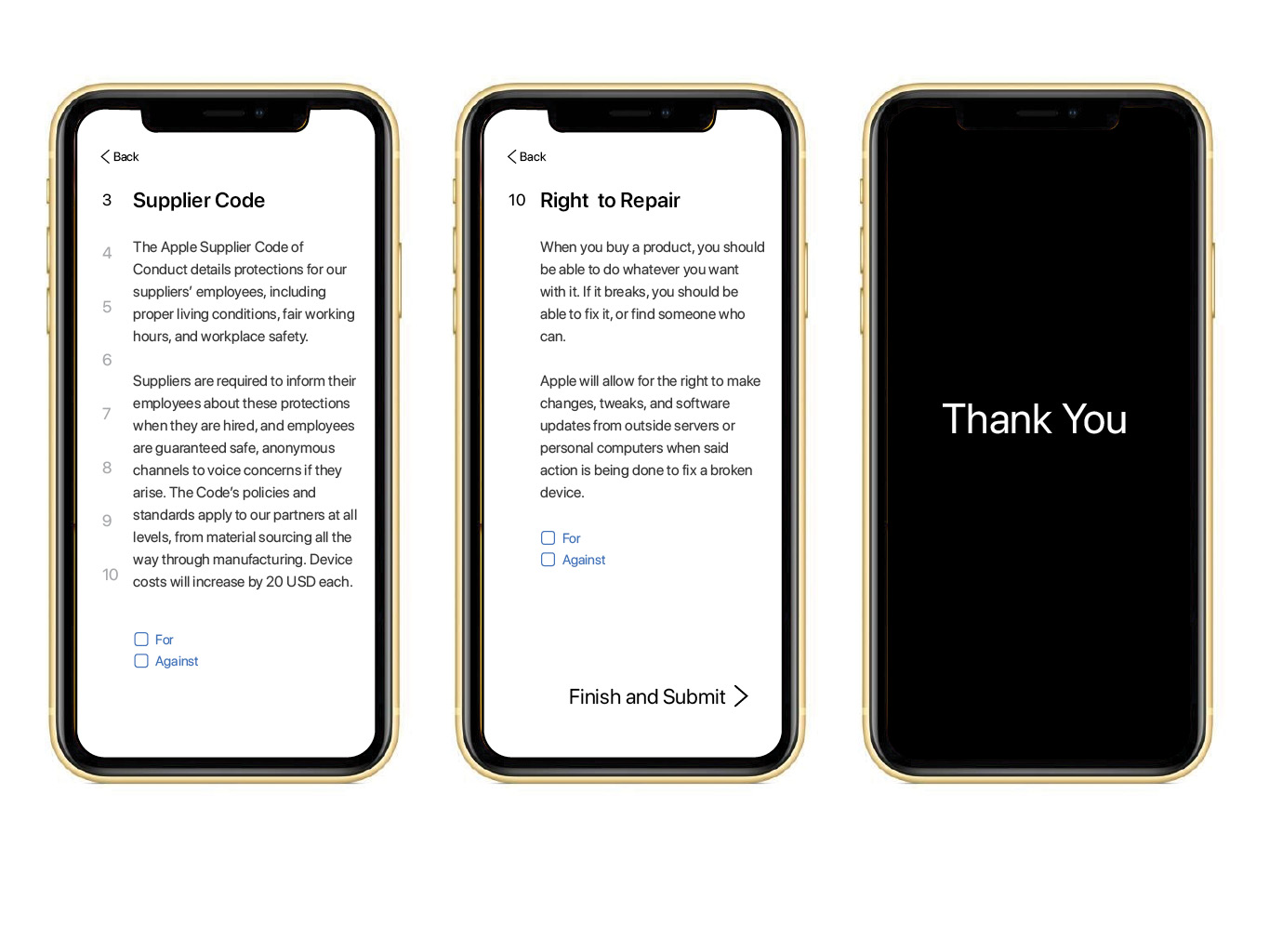
Apple Vote / 2018
Hannah Mazur (Communication Design)
As tensions between UX Design, data collection, and privacy increase, new models for corporate decision-making emerge. This scenario proposes Apple, Inc. taking an approach that positions consumers in the role typically played by shareholders. By agreeing to the terms and conditions for use of Apple products, consumers participate in corporate governance. Upon startup, Apple products load the Apple Vote software. By opting in, the app will automatically download the iOS and pro file setup for a "User-Owner." Opting out puts limits on the iOS and how much the user can interact with others on their new device. User-Owners can follow issues and get updates on voting results on the now standard pre-installed Apple Vote app. Responsibility for global activities—from data privacy to supply management to labor relations and pricing impacts—are shared between corporation and consumer.

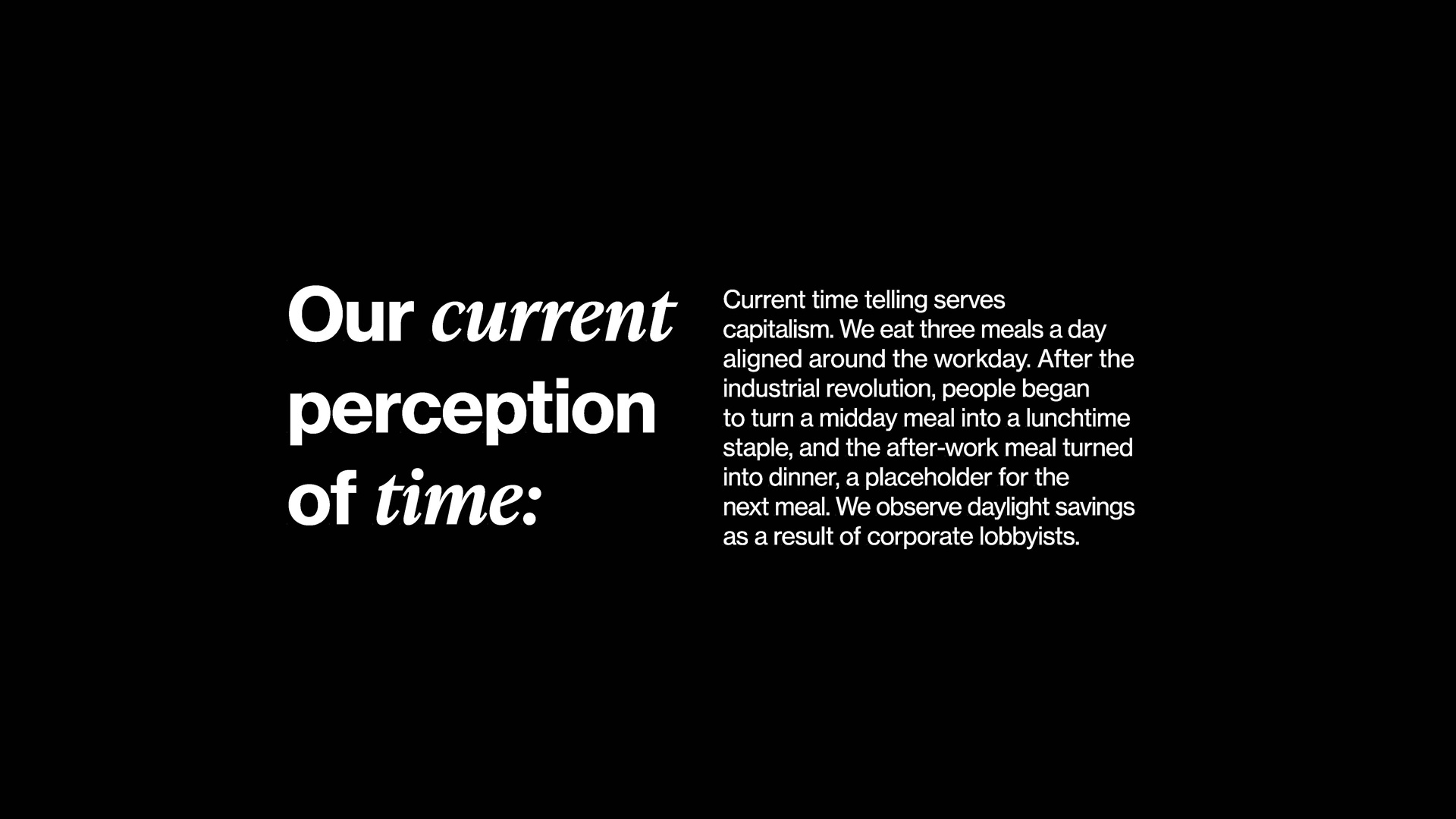

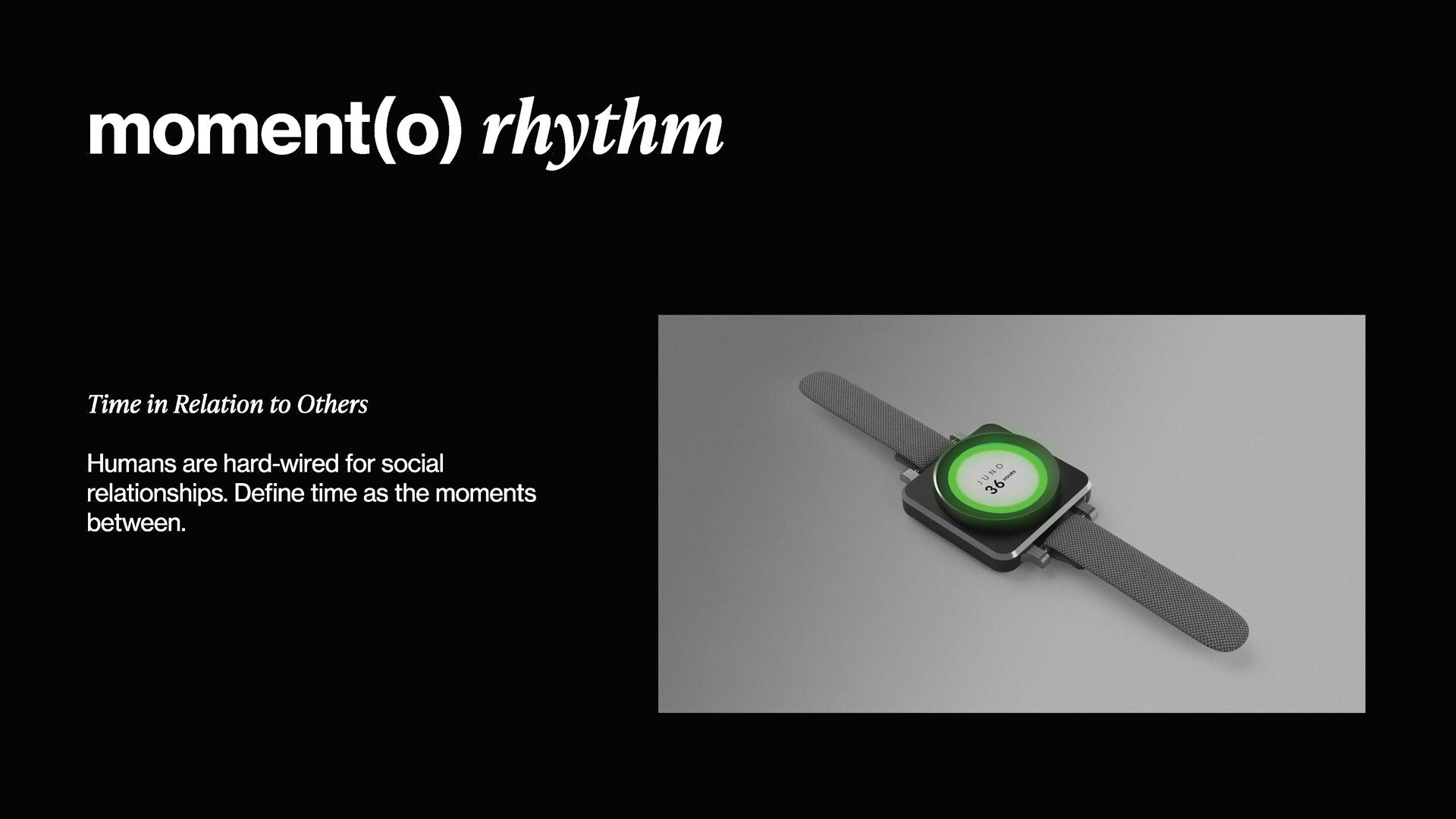

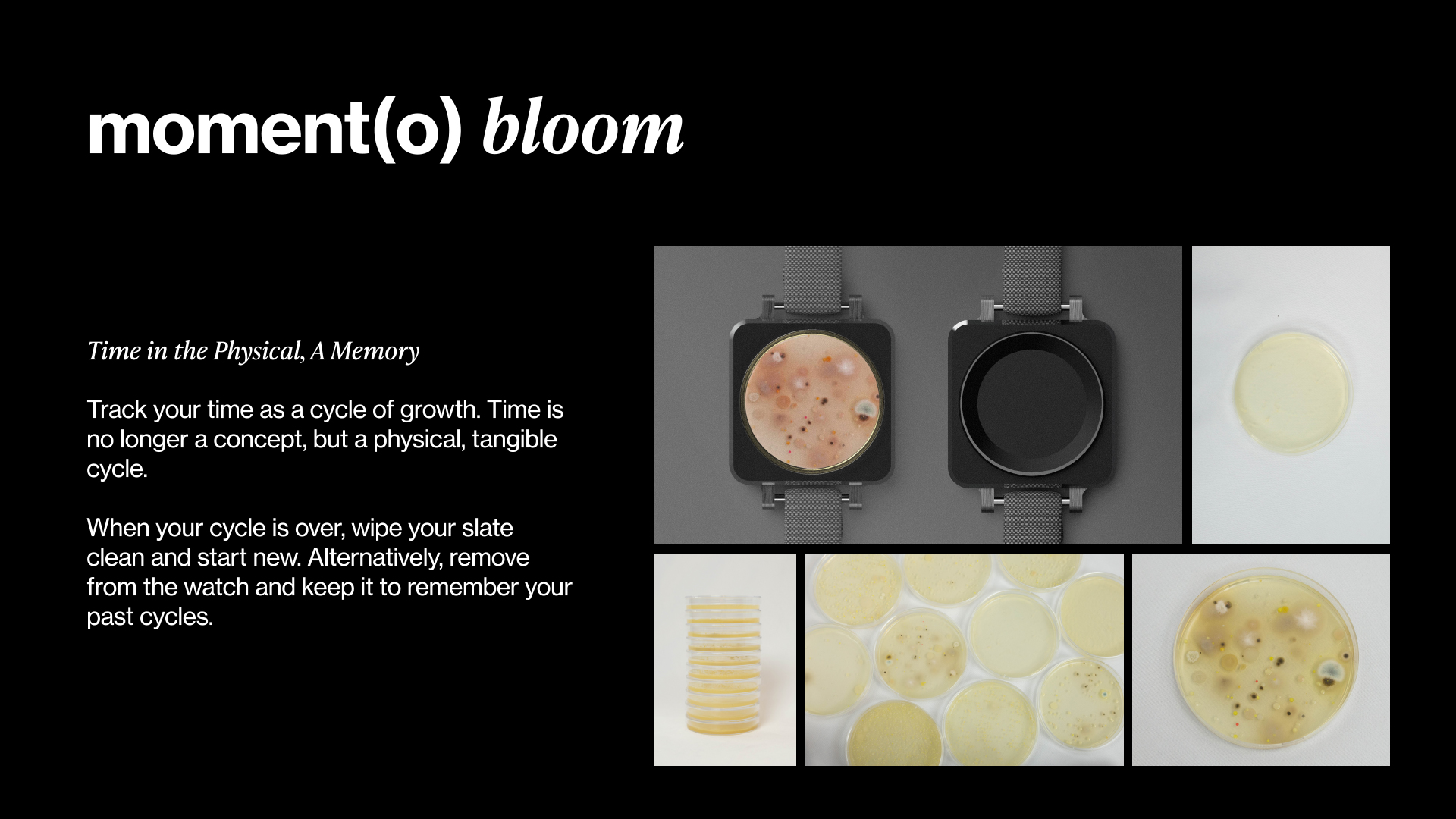
MOMENT(O) / 2020
Tim Kim (Communication Design), Gail Kreimer (Communication Design), Elie Fermann (Fashion Design), and Joe Reluzco (Industrial Design)
In a transformational scenario of the future, automation populates the workforce and basic needs are met by government. Humans have more control over more of their own time than ever before. Free from the looming and stressful grip of standardized time, people are free to decide how they define the passage of time, and time-telling becomes a personal project. Moment(o) is a collection of time objects decoupled from standardized time system that capitalism created. A wearable device offers two possible faces; both of which operate a more subtle idea of time.
Moment(o) Bloom showcases bacteria colonies growing over time to simulate personal growth. This face represents the user's milestones in visual form. Users have the option to wipe their face off and start on a clean slate or to take a picture and keep it as a remembrance of that period of time.
Moment(o) Rhythm is an interface to create connections between multiple people. Time is seen as a rhythm to follow to a defined point in the future, where users will connect with others again. Two or more people define for themselves how long it will be until they connect again, and Moment(o) Rhythm drains pixels like an hourglass to countdown until the next get-together.
Student projects from this course have beenrecognized by professional and academic organizations such as the Primer 2019 Emerging Designer Exhibition (Adriana Noritz, Luke Weaver, & Noah Katrinchak) and at the AIGA 2019 National Design Conference (Design After Capitalism, Matthew Wizinsky & Adriana Noritz). Methods from the course have been disemminated via workshops at AIGA 2016 National Design Conference (Las Vegas, NV), Primer 2018 Conference (San Francisco, CA), and Social Innovation, Social Justice: Rethinking Design Anthropology 2018 conference (Cincinnati, OH).
RELATED PUBLICATIONS
Wizinsky, M. (2019). “Speculative City: Critical Speculation in Defense of Design’s Material Expertise.” AIGA Design Educators Community (DEC) and University of Michigan: Dialectic, 2(2): 23–46.
Wizinsky, M. (2017) “Dread & Desire: Urban Futures at the Scale of the Human Body.” IASDR 2017 Exhibition Catalog.Scholar@UC: 16 pp. DOI: 10.7945/C2BD6W